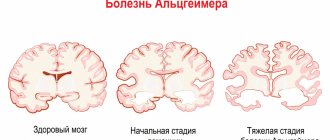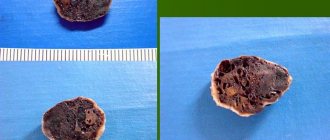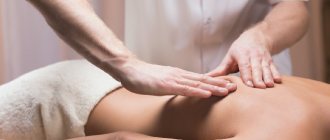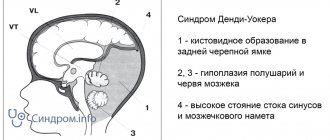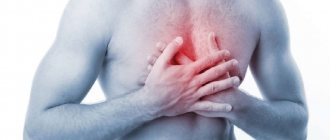Amyotrophic lateral sclerosis (ALS) is a progressive neurodegenerative disease of the central nervous system. It develops under the influence of several factors that cause complete destruction and death of peripheral and central motor neurons. First, clinical paralysis develops, then muscle atrophy occurs. One muscle group after another is gradually involved in the pathological process. When the diaphragmatic muscles are affected, the patient loses the ability to breathe independently and requires artificial ventilation.
The disease is rare (statistically, it affects 2-5 people per 100 thousand people per year), and around the world it affects about 70 thousand people. It is also known that the disease is more often observed in men than in women, and the age of patients is usually over 50 years. The disease usually occurs in highly intelligent people and athletes who enjoy good health throughout their lives.
Currently, there is no single pharmacological agent that would cure ALS. Doctors at the neurology clinic provide symptomatic therapy with drugs registered in the Russian Federation. Due to the fact that clinical trials are conducted at the Yusupov Hospital, patients have a unique opportunity to be treated with the latest medicines that are not available in pharmacies. Specialists at the physical rehabilitation clinic use innovative techniques aimed at increasing muscle strength. If indicated, doctors in the intensive care unit perform artificial ventilation of the lungs using expert-class breathing apparatus.
Causes and mechanisms of development
Scientists believe that amyotrophic lateral sclerosis can develop under the influence of the following factors:
- Autoimmune processes - phenomena in which the immune system perceives healthy cells as foreign elements and destroys them;
- Exposure to exotoxins - heat-labile proteins secreted by microorganisms;
- Excessive intake of calcium ions into nerve cells;
- Smoking.
Some researchers believe that amyotrophic lateral sclerosis is hereditary. The disease can be inherited in an autosomal recessive or autosomal dominant manner. In 15% of cases, patients were completely missing or had a defect in the gene that encodes an important enzyme, superoxide dismutase-1. It is part of the antioxidant system of the human body. Superoxide dismutase-1 converts superoxide (a radical oxidation product) into oxygen. Superoxide attacks nerve cells. The mechanism of development of the disease is based on a pathological abnormal association of protein molecules in the cytoplasm of motor neurons of the brain and spinal cord. With further progression of the disease, the following pathological processes occur:
- Skeletal muscles atrophy;
- The corticospinal and corticobulbar spinal tracts are degenerated;
- Motor neurons of the brain atrophy;
- The hypoglossal nerve and the anterior roots of the spinal cord become thinner.
Researchers have not yet established the reasons for the sudden onset of the process of destruction and death of motor neurons. Some scientists suggest that neurogeneration occurs under the influence of cellular and molecular processes. As a result of increased work of motor neurons, the release of glutamate increases. Excessive amounts of calcium accumulate in cells. It activates the breakdown of intracellular proteins. A large number of free radicals are released, including superoxide dismutase-1. They damage astroglia, microglia and motor neurons, causing their degeneration.
Expert opinion
Alexey Vladimirovich Vasiliev Head of the Research Center for Motor Neuron Disease/ALS, Candidate of Medical Sciences, doctor of the highest category
Amyotrophic lateral sclerosis is a fatal disease that develops very slowly and is characterized by damage to motor neurons - muscles atrophy, paresis and paralysis of the limbs develop.The symptoms of ALS are similar to those of myopathy. The difference is that amyotrophic sclerosis is a disease of the central nervous system, and myopathy is muscular dystrophy. The main method for diagnosing ALS is electromyography, and MRI, biochemical blood tests, cerebrospinal fluid studies, and muscle biopsy are used as secondary methods.
Amyotrophic lateral syndrome is a very rare disease - no more than 5 people out of 100 thousand. This pathology is also called Charcot's disease or Lou Gehrig's disease, and was first described in the second half of the 19th century. Approximately 5% of cases are hereditary, and the genes responsible for this disease have already been identified.
Like other degenerative diseases of the central nervous system, Charcot's disease cannot be cured, you can only slow down its development. Of course, the earlier the disease is diagnosed, the better the syndromes can be stopped. The disease ends with complete muscle atrophy, the patient loses the ability to move and breathe independently.
Publications in the media
Amyotrophic lateral sclerosis (ALS) is a chronic, progressive neurodegenerative disease characterized by damage to motor neurons in the brain and spinal cord and degeneration of their axons. Frequency • Approximately five people per 100,000 population are affected • On average one new case per 100,000 population per year. Prevalent age • The average age of onset is 55 years • The likelihood of occurrence increases with age. The predominant gender is male (1.5–2:1).
Classification • Sporadic ALS, the most common form of the disease • Familial ALS - a disease clinically similar to sporadic forms of ALS - 5-10% of cases • Guam Island complex (ALS-dementia-parkinsonism complex) - a rare syndrome similar to ALS, usually (but not always) associated with parkinsonism and dementia. Relatively common among the indigenous population of the Pacific island of Guam.
Etiology and pathogenesis • The etiology of sporadic ALS is unknown. As the disease progresses, degeneration of motor neurons in the brain (in the cortex and brainstem) and spinal cord (in the anterior horns) and their axons (in the corticobulbar, corticospinal tracts and peripheral nerves) occurs. The role of glutamate is suggested in the pathogenesis of the disease • Some cases of familial ALS are caused by dominant mutations of the gene encoding the formation of the enzyme Cu/Zn superoxide dismutase (SOD-1, locus 21q22.1–q22.2). Normally, SOD-1 inhibits IL-1b-converting enzyme. Under the influence of the latter, IL-1b is formed, which initiates the death of neurons after binding to its membrane receptor. The product of the defective SOD-1 gene is not capable of inhibiting the IL-1b-converting enzyme; the resulting IL-1b induces the death of motor neurons at various levels of the nervous system. Given the presence of a recessive form, familial ALS has more than 1 locus in the genome. The recessive form is rare and more common in Tunisia (205100), characterized by early onset (average age 12 years) • The etiology of the Guam complex is unknown. Genetic and environmental factors are considered to be the causes of the disease. In typical cases, the syndrome is characterized by a combination of ALS, parkinsonism and dementia in members of the same family.
Genetic aspects: • deficiency of superoxide dismutase 1, 147450, SOD1, 21q22.1, ALS1, 105400; • ALS2, 205100, 2q33 q35.
Pathomorphology • Atrophy or absence of motor neurons, accompanied by moderate gliosis without signs of inflammation •• Loss of giant pyramidal cells (Betz cells) of the motor cortex •• Death of motor neurons in the anterior horns of the spinal cord, the most pronounced changes occur in the cervical and lumbar segments •• Cell death in the motor nuclei of the brain stem, the most pronounced changes occur in the nucleus of the hypoglossal nerve • Degeneration of the lateral pyramidal tracts of the spinal cord • Atrophy of the anterior roots • Atrophy of groups of muscle fibers (as part of motor units).
Clinical picture
• Various combinations of the following main symptoms: •• Signs of dysfunction of the motor neurons of the anterior horns of the spinal cord - weakness and muscle atrophy - most often begin in the arms and, less often, feet, progress asymmetrically and lead to difficulty performing movements •• Painful spasms (cramps), may precede muscle weakness •• Symptoms of spinal cord motor neuron dysfunction are soon joined by signs of damage to the corticospinal tracts: visible muscle fasciculations, spasticity, increased deep tendon (including masticatory) and extensor plantar reflexes (Babinski reflex) •• Dysarthria (speech impairment) and dysphagia ( swallowing disorder) •• Sensitivity, voluntary eye movements and autonomic functions are preserved.
• Associated symptoms •• Unexplained weight loss •• Emotional lability.
Diagnostic criteria • Onset in middle or old age, usually after 40 years • Progressive muscle weakness, generalized lesions • No sensory impairment.
Diagnostic procedures • Electromyography: fibrillations, positive waves, fasciculations even in clinically unaffected muscles • Muscle biopsy: group atrophy of muscle fibers • The speed of nerve impulses is preserved until the later stages of the disease.
Differential diagnosis • Lead intoxication • Spinal muscular atrophy (in adults) • Primary lateral sclerosis • Familial spastic paraparesis • Spinal multiple sclerosis • Tropical spastic paraparesis • Myopathies • Intervertebral disc herniation • Spinal cord tumors • Syringomyelia • Congenital anomalies of the cervical spine • Diabetic amyotrophy • Poliomyelitis.
TREATMENT
Physical activity. The patient should maintain physical activity to the best of his ability • As the disease progresses, the need for a wheelchair and other special devices becomes necessary.
Diet • Dysphagia creates a risk of food entering the airways • Sometimes a feeding tube or gastrostomy tube is necessary.
Drug therapy • Baclofen - to reduce spasticity • Quinine or phenytoin - to reduce painful spasms • TAD (amitriptyline 10 mg 4 times a day).
Observation • Every 3 months • More often as the disease develops and symptomatic therapy is necessary.
Course and prognosis • The disease is incurable, mortality is 100%, average life expectancy is about 5 years from the moment of diagnosis • 50% of patients die within 3 years, 20% live 5 years, 10% - 10 years from the onset of the disease • With familial dominant form - incomplete penetrance; by the age of 85 years, only approximately 80% of mutation carriers have clinical manifestations.
Age-specific features • Spinal muscular atrophies in children and adolescents are clinically and pathologically distinct from ALS • ALS symptoms are sometimes mistakenly attributed to older age.
Synonyms • Charcot's disease • Low Gehrig's disease.
ICD-10 • G12.2 Motor neuron disease
Clinical forms
Depending on the level of damage to the central nervous system, neurologists distinguish the following types of ALS:
- Bulbar;
- Cervical;
- Chest;
- Lumbar;
- Diffuse;
- Respiratory (diaphragmatic).
Doctors also distinguish between the classic form of ALS, progressive bulbar palsy, primary lateral sclerosis, progressive muscular atrophy, and ALS-parkinsonism-dementia. According to the frequency of occurrence, there are sporadic (single) and familial amyotrophic lateral sclerosis.
What is motor neuron disease
Motor neuron disease (MND) is a progressive neurodegenerative disease that affects motor neurons in the brain and spinal cord. The gradual death of cells in the nervous system leads to steadily increasing muscle weakness, affecting all muscle groups.
Motor neurons
The brain neurons that control movement (upper motor neurons) are located in the cerebral cortex. Their processes (axons) descend into the spinal cord, where they contact the spinal cord neuron. This contact is called a synapse. In the area of the synapse, a brain neuron releases a chemical substance (transmitter) from its process, which transmits a signal to a spinal cord neuron.
Spinal cord neurons (lower motor neurons) are located in the lower parts of the brain (bulbar) and in the cervical, thoracic, or lumbar spinal cord, depending on which muscles they send their signals to. These signals travel along the spinal cord neuron processes (axons) to the muscles and control their contractions. Bulbar neurons are responsible for contracting muscles associated with speech, chewing, and swallowing; cervical spine - for contraction of the diaphragm, arm movements; thoracic region - for body movements; lumbar region - for leg movements.
Manifestations of motor neuron damage
- When neurons in the spinal cord are damaged, muscle weakness increases, muscles lose weight (atrophy), and involuntary twitching (fasciculations) appears in them. Fasciculations don't just feel like twitching, they can also be seen. This is similar to subcutaneous muscle fluttering.
- If the neurons of the brain are affected, the muscles become weak, but at the same time stiffness (spasticity) appears, that is, muscle tone increases and it becomes difficult to relax.
- When neurons in the brain and spinal cord are simultaneously damaged, these signs can occur in different combinations. That is, muscle weakness can be accompanied by both fasciculations and muscle loss, as well as stiffness.
- Depending on which parts of the brain and spinal cord are affected, these signs may appear in the muscles responsible for the movements of the arms, legs, breathing or swallowing.
Symptoms
The clinical picture of the disease depends on the form of ALS. As the disease progresses, the pathological process involves all muscles, and the symptoms will be the same for all forms of amyotrophic lateral sclerosis. The following general symptoms are characteristic of ALS:
- Fasciculations (muscle twitching) are one of the first symptoms of ALS, which may disappear on their own over time;
- Drooling, which occurs due to the accumulation of saliva in the mouth;
- Muscle weakness, developing due to the fact that the muscles are rapidly losing mass;
- Painful cramps and muscle spasms that cause difficulty during movement;
- Rapid fatigue, which occurs due to the fact that the muscles require more expenditure to perform normal actions;
- Pain that occurs during spasms, cramps, muscle twitching;
- Problems with swallowing, which lead to the patient losing the ability to eat;
- Cough and feeling of suffocation that occurs when saliva enters the respiratory tract;
- Problems with breathing, subsequently requiring the patient to be placed on artificial ventilation.
The patient also has problems with speech and communication. Psychologists at the Yusupov Hospital help patients cope with this problem. They teach communication using writing machines, computers, boards, tables. The patient's emotional lability requires special therapy. It may manifest itself as involuntary laughter or crying. Also, patients with ALS experience mood swings, develop depressive syndrome, and become irritable.
Violation of higher mental functions is manifested by impaired memory, thinking, and decreased intelligence. Experienced doctors at the neurology clinic and psychologists can help you cope with the problem. ALS does not affect vision, hearing, smell or touch. In patients, intestinal function and sexual function are not impaired, and the heart muscle is not affected.
Lumbosacral form
Lateral amyotrophic syndrome at the onset of the disease is manifested by weakness of the muscles of the lower extremities. First one leg gets sick, and after a while the other one hurts. Over time, tendon reflexes decrease and severe itching occurs.
As the disease progresses, the arm muscles are affected. They sharply decrease in volume. Then swallowing is impaired, the voice becomes nasal, and the tongue becomes thinner. The patient begins to choke and has problems eating. It is becoming increasingly difficult for him to chew. Then the sick person's jaw drops and he loses the ability to feed himself.
Another group of ALS symptoms indicates damage to both central and peripheral motor neurons. Weakness in the legs is combined with increased reflexes. Uncontrollable trembling often occurs. The same happens with the upper limbs. When neurons in the brain are affected, problems with chewing and swallowing occur. The patient's jaw drops, which prevents him from feeding independently. Sometimes the patient experiences bouts of uncontrollable laughter or crying.
Cervicothoracic form
ALS occurs when a peripheral motor neuron is destroyed. The patient develops weakness in the hand muscles. The hand begins to atrophy. At first, manifestations of the disease occur in one upper limb, but after a few months the other arm is also affected.
In the lower extremities, the pathological process proceeds differently. The leg muscles do not atrophy. Initially, an increase in reflexes is noted. Over time, pain and muscle weakness appear in the legs. By this time, the speech apparatus is impaired, weakness of the neck muscles appears - the head begins to hang. With the synchronous destruction of peripheral and central motor neurons, the muscles of the patient’s arms and legs atrophy, but reflexes are preserved.
At the onset of the patient’s bulbar form of ALS, the following symptoms occur:
- Difficulty swallowing;
- Articulation impairment;
- Choking while eating;
- Fasciculation and atrophy of the tongue;
- Nasal voice.
Problems with tongue movement make it difficult to pronounce sounds. When the central motor neuron is destroyed, psychosomatics are disrupted. The patient may show uncontrollable emotions: laughing or crying. Often he has an uncontrollable gag reflex for no reason. After some time, the strength of the muscles of the upper and lower extremities decreases, and they atrophy. Paresis (incomplete paralysis) develops.
High form
ALS develops when the central motor neuron is destroyed. In this form of the disease, along with muscle damage, the function of the nervous system is disrupted. The patient's mental health is impaired. He begins to remember information poorly, and his level of intelligence decreases significantly. Subsequently, dementia develops.
Diffuse form
lateral amyotrophic syndrome begins with the development of flaccid asymmetric tetraparesis (incomplete paralysis of all four limbs). Then bulbar syndrome joins in the form of dysphonia (speech disorder) and dysphagia (swallowing disorders). The respiratory form of the disease is very difficult. Due to respiratory failure, patients require urgent artificial ventilation.
Make an appointment
Amyotrophic lateral sclerosis (and ALS syndrome)
Amyotrophic lateral sclerosis (ALS) (also known as motor neuron disease, Motor neuron disease, Charcot's disease, in English-speaking countries - Lou Gehrig's disease) is a progressive, incurable degenerative disease of the central nervous system, which affects both the upper (motor cortex) brain) and lower (anterior horns of the spinal cord and nuclei of the cranial nerves) motor neurons, which leads to paralysis and subsequent muscle atrophy.
General information.
The disease has not been known for long. First described by Jean-Martin Charcot in 1869. According to statistics, it is detected in 2-5 people per 100,000 population per year, which suggests that this pathology is relatively rare. In total, there are about 70 thousand patients with amyotrophic lateral sclerosis in the world. The disease usually manifests itself in people over 50 years of age.
More recently, it has been suggested that cases of amyotrophic lateral sclerosis are more often recorded in highly intelligent people, professionals in their field, as well as in athletes who have been in good health throughout their lives.
In 90% of cases, ALS is sporadic, and in 10% it is familial or hereditary in nature, with both autosomal dominant (predominantly) and autosomal recessive types of inheritance. The clinical and pathological characteristics of familial and sporadic ALS are almost identical.
The exact etiology of ALS is unknown.
Pathogenesis.
The essence of the disease lies in the degeneration of motor neurons, i.e. under the influence of a number of reasons, the process of destruction of nerve cells responsible for muscle contractions is started. This process affects neurons of the cerebral cortex, cerebral nuclei and neurons of the anterior horns of the spinal cord. Motor neurons die, and no one else performs their functions. Nerve impulses no longer reach muscle cells. And the muscles weaken, paresis and paralysis develop, and muscle tissue atrophy develops.
If amyotrophic lateral sclerosis is based on a mutation in the superoxide dismutase-1 gene, then the process looks something like this. Mutant superoxide dismutase-1 accumulates in the mitochondria of motor neurons (in the energy stations of the cell). This “interferes” with the normal intracellular transport of protein formations. The proteins connect with each other, as if sticking together, and this starts the process of cell degeneration.
If the cause is excess glutamate, then the mechanism that triggers the destruction of motor neurons is as follows: glutamate opens channels in the neuron membrane for calcium. Calcium rushes into the cells. Excess calcium, in turn, activates intracellular enzymes. Enzymes seem to “digest” the structures of nerve cells, and a large number of free radicals are formed. And these free radicals damage neurons, gradually leading to their complete destruction.
It is assumed that the role of other factors in the development of ALS is also the triggering of free radical oxidation.
Classification of ALS, forms:
- lumbosacral;
- cervicothoracic;
- bulbar: with damage to a peripheral motor neuron in the brain stem;
- high: with damage to the central motor neuron.
Common symptoms characteristic of any form of amyotrophic lateral sclerosis are:
- purely motor disorders;
- absence of sensory disorders;
- absence of disorders of the urination and defecation organs;
- steady progression of the disease with the capture of new muscle masses up to complete immobility;
- the presence of periodic painful cramps in the affected parts of the body, they are called cramps.
Clinic
Initial manifestations of the disease: •weakness in the distal arms, awkwardness when performing fine movements with the fingers, weight loss in the hands and fasciculations (muscle twitching) •less commonly, the disease debuts with weakness in the proximal arms and shoulder girdle, atrophy in the leg muscles in combination with lower spastic paraparesis •it is also possible that the disease begins with bulbar disorders - dysarthria and dysphagia (25% of cases) •cramps (painful contractions, muscle spasms), often generalized, are found in almost all patients with ALS, and are often the first sign of the disease. ALS in most cases is characterized by asymmetry symptoms.
Lumbosacral shape:
With this form of the disease, two options are possible:
- the disease begins only with damage to the peripheral motor neuron located in the anterior horns of the lumbosacral spinal cord. In this case, the patient develops muscle weakness in one leg, then it appears in the other, tendon reflexes (knee, Achilles) decrease, muscle tone in the legs decreases, atrophy gradually forms (this looks like weight loss in the legs, as if “drying out”) . At the same time, fasciculations are observed in the legs - involuntary muscle twitching with a small amplitude (“waves” of muscles, muscles “moving”). Then the arm muscles are involved in the process, their reflexes also decrease, and atrophy forms. The process goes higher - the bulbar group of motor neurons is involved. This leads to the appearance of symptoms such as difficulty swallowing, blurred and unclear speech, a nasal tone of voice, and thinning of the tongue. Choking occurs when eating, the lower jaw begins to sag, and problems with chewing appear. There are also fasciculations on the tongue;
- at the onset of the disease, signs of simultaneous damage to the central and peripheral motor neurons that provide movement in the legs are revealed. In this case, weakness in the legs is combined with increased reflexes, increased muscle tone, and muscle atrophy. Pathological foot symptoms of Babinsky, Gordon, Schaeffer, Zhukovsky, etc. appear. Then similar changes occur in the hands. Then the motor neurons of the brain are also involved. Disturbances in speech, swallowing, chewing, and twitching in the tongue appear. Violent laughter and crying join in.
Cervicothoracic form:
Can also debut in two ways:
- damage to only the peripheral motor neuron - paresis, atrophy and fasciculations appear, decreased tone in one hand. After a couple of months, the same symptoms appear in the other hand. The hands take on the appearance of a “monkey’s paw”. At the same time, increased reflexes and pathological foot signs without atrophy are detected in the lower extremities. Gradually, muscle strength decreases in the legs, and the bulbar part of the brain is involved in the process. And then blurred speech, problems with swallowing, paresis and fasciculations of the tongue appear. Weakness in the neck muscles is manifested by drooping of the head;
- simultaneous damage to central and peripheral motor neurons. In the arms there are simultaneously atrophies and increased reflexes with pathological signs of the hand, in the legs there are increased reflexes, decreased strength, and pathological foot symptoms in the absence of atrophies. Later, the bulbar region is affected.
Bulbar form:
- In this form of the disease, the first symptoms of damage to the peripheral motor neuron in the brain stem are articulation disorders, choking when eating, nasal voice, atrophy and fasciculations of the tongue. Movement of the tongue is difficult. If the central motor neuron is also affected, then these symptoms are accompanied by an increase in the pharyngeal and mandibular reflexes, violent laughter and crying. The gag reflex increases.
As the disease progresses, paresis forms in the hands with atrophic changes, increased reflexes, increased tone and pathological foot signs. Similar changes occur in the legs, but somewhat later.
High form:
This is a type of amyotrophic lateral sclerosis, when the disease occurs with primary damage to the central motor neuron. At the same time, paresis is formed in all muscles of the trunk and limbs with increased muscle tone and pathological symptoms.
Bulbar and high forms of ALS are prognostically unfavorable. Patients with this onset of the disease have a shorter life expectancy compared to the cervicothoracic and lumbosacral forms. Whatever the first manifestations of the disease, it progresses steadily.
Paresis in various limbs leads to impaired ability to move independently and take care of oneself. Involvement of the respiratory muscles in the process initially leads to the appearance of shortness of breath during physical activity, then shortness of breath becomes disturbing at rest, and episodes of acute lack of air appear. In the terminal stages, independent breathing is simply impossible; patients require constant artificial ventilation.
According to various sources, the life expectancy of a patient with ALS ranges from 2 to 12 years, but more than 90% of patients die within 5 years of diagnosis. In the terminal stage of the disease, patients are completely bedridden, breathing is supported by a ventilator. The cause of death of such patients may be respiratory arrest, complications in the form of pneumonia, thromboembolism, infection of bedsores with generalization of infection.
Diagnostics:
Among paraclinical studies, electromyography has the most significant diagnostic value. A widespread lesion of the cells of the anterior horns is revealed (even in clinically intact muscles) with fibrillations, fasciculations, positive waves, changes in the potentials of motor units (their amplitude and duration increases) at a normal speed of excitation along the fibers of the sensory nerves. Plasma CPK levels may be slightly increased
Amyotrophic lateral sclerosis should be suspected: • with the development of weakness and atrophy, and possibly fasciculations (muscle twitching) in the muscles of the hand • with loss of weight in the thenar muscles of one of the hands with the development of weakness of adduction (adduction) and opposition of the thumb (usually asymmetrical) • in this case there is difficulty in grasping with the thumb and forefinger, difficulty in picking up small objects, when fastening buttons, when writing • with the development of weakness in the proximal parts of the arms and shoulder girdle, atrophy in the leg muscles in combination with lower spastic paraparesis • with the development of dysarthria in the patient ( speech disorders) and dysphagia (swallowing disorders) • when the patient develops cramps (painful muscle contractions)
Diagnostic criteria for ALS:
- Signs of lower motor neuron lesions (including EMG evidence in clinically spared muscles).
- Symptoms of upper motor neuron damage
- Progressive course
Criteria for excluding ALS To diagnose amyotrophic lateral sclerosis, the absence of: • sensory disorders, primarily loss of sensitivity (paresthesia and pain are possible) • pelvic disorders - disorders of urination and defecation (their addition is possible at the final stages of the disease) • visual disturbances • autonomic disorders • Parkinson's disease • Alzheimer's type dementia • ALS-like syndromes
Criteria for confirming ALS:
The diagnosis of ALS is confirmed:
- Fasciculations in one or more areas
- EMG signs of neuronopathy
- Normal speed of excitation along motor and sensory fibers (distal motor latencies may be increased)
- Absence of a conduction block
Differential diagnosis of ALS (syndromes similar to ALS): • Spondylogenic cervical myelopathy. •Tumors of the craniovertebral region and spinal cord. •Craniovertebral anomalies. •Syringomyelia. •Subacute combined degeneration of the spinal cord with vitamin B12 deficiency. •Family spastic paraparesis of Strumpel. •Progressive spinal amyotrophy. •Postpoliomyelitis syndrome. •Intoxication with lead, mercury, manganese. • Hexosaminidase type A deficiency in adults with GM2 gangliosidosis. •Diabetic amyotrophy. •Multifocal motor neuropathy with conduction blocks. •Creutztfeldt-Jakob disease. •Paraneoplastic syndrome, in particular with lymphogranulomatosis and malignant lymphoma. •ALS syndrome with paraproteinemia. •Axonal neuropathy in Lyme disease (Lyme borreliosis). •Guillain-Barre syndrome. •Myasthenia. •Multiple sclerosis •Endocrinopathies (thyrotoxicosis, hyperparathyroidism, diabetic amyotrophy). •Benign fasciculations, i.e. fasciculations that continue for years without signs of damage to the motor system. •Neuroinfections (poliomyelitis, brucellosis, epidemic encephalitis, tick-borne encephalitis, neurosyphilis, Lyme disease). •Primary lateral sclerosis.
Diagnostic studies for ALS syndrome.
To clarify the diagnosis and carry out a differential diagnosis for ALS syndrome, the following examination of the patient is recommended:
Blood test (ESR, hematological and biochemical studies)
X-ray of the chest organs
ECG
Study of thyroid function
Determination of vitamin B12 and folic acid in the blood
Serum creatine kinase
EMG
MRI of the brain and, if necessary, the spinal cord
Lumbar puncture.
Treatment
There is no effective treatment for the disease. The only drug, the glutamate release inhibitor riluzole (Rilutek), delays death by 2 to 4 months. It is prescribed 50 mg twice a day.
The basis of treatment is symptomatic therapy:
•Physiotherapy.
•Physical activity. The patient should maintain physical activity to the best of his ability. As the disease progresses, the need for a wheelchair and other special devices arises.
•Diet. Dysphagia creates a risk of food entering the airways • Sometimes there is a need for a feeding tube or gastrostomy.
•Use of orthopedic devices: cervical collar, various splints, devices for grasping objects.
•For cramps (painful muscle spasms): carbamazepine (Finlepsin, Tegretol) and/or vitamin E, as well as magnesium preparations, verapamil (Isoptin).
•For spasticity: baclofen (Baclosan), Sirdalud, and clonazepam.
•For drooling, atropine or hyoscine (Buscopan).
•If it is impossible to eat due to impaired swallowing, a gastrostomy tube is placed or a nasogastric tube is inserted. Early percutaneous endoscopic gastrostomy prolongs the life of patients by an average of 6 months.
•For pain syndromes, the entire arsenal of analgesics is used. Including narcotic analgesics in the final stages.
•Sometimes anticholinesterase drugs (neostigmine methyl sulfate - prozerin) bring some temporary improvement.
•Cerebrolysin in high doses (10-30 ml intravenous drips for 10 days in repeated courses). There are a number of small studies showing the neuroprotective efficacy of Cerebrolysin in ALS.
•Antidepressants: Sertaline or Paxil or Amitriptyline (some patients with ALS prefer it precisely because of the side effects - it causes dry mouth, and accordingly reduces hypersalivation (salivation), which often torments patients with ALS).
•If respiratory disorders occur: artificial ventilation in hospitals, as a rule, is not carried out, but some patients purchase portable ventilators and perform mechanical ventilation at home.
•Developments are underway for the use of growth hormone and neurotrophic factors in ALS.
•Recently, there has been active development of stem cell treatment. This method promises to be promising, but is still at the stage of scientific experiments.
Forecast
•Amyotrophic lateral sclerosis is a fatal disease. The average life expectancy of patients with ALS is 3–5 years, however, 30% of patients live 5 years, and about 10–20% live more than 10 years from the onset of the disease.
•Unfavorable prognostic signs are old age and bulbar disorders (after the appearance of the latter, patients live no more than 1 - 3 years).
There is no specific prevention.
Forecast
It should be noted that the high and bulbar forms of amyotrophic lateral sclerosis are the most unfavorable - with them, the life expectancy of patients is significantly reduced. However, no matter what the first symptoms are, the disease quickly progresses, subsequently taking over the entire body, and the patient loses the ability to eat and move independently. Sometimes shortness of breath occurs - with physical activity and sometimes even without it. The patient feels a lack of air, which gives rise to panic. In the future, he may stop breathing on his own, and in order to provide him with oxygen, constant artificial ventilation will be needed. In some cases, at the end of the disease, difficulties with urination may appear. Due to atrophy, the patient loses weight.
Lateral atrophic sclerosis is accompanied by autonomic disorders: the limbs become noticeably cold, areas of the skin become stained, sweating and greasiness of the skin increases.
Life expectancy ranges from approximately 2 to 12 years, but most patients die within 5 years of diagnosis.
Different types of motor neuron disease
Depending on the severity of damage to neurons in the brain and spinal cord, several variants of MND are distinguished. Of course, most of the manifestations coincide, because there is much in common between these types of illness, but as the disease develops, the difference becomes more noticeable.
We'll be talking about life expectancy here, so you may not want to read any further.
Amyotrophic lateral sclerosis (ALS)
This is the most common form of the disease, when motor neurons of both the brain and spinal cord are involved in the pathological process.
ALS is characterized by weakness and a feeling of extreme fatigue in the limbs. Some people experience weakness in their legs when walking and such weakness in their arms that they are unable to hold things and drop them. The average life expectancy is two to five years from the onset of symptoms.
Progressive Bulbar Palsy (PBP)
The term is used mainly in foreign literature. The main difference between PPD and other types of motor neuron disease is the rapidly increasing impairment of speech and swallowing. Life expectancy ranges between six months and three years from the onset of symptoms.
Primary lateral sclerosis (PLS)
A rare form of MND that affects only the motor neurons of the brain, resulting primarily in weakness in the legs, although some sufferers have clumsiness in the arms or problems speaking. PLS does not shorten life expectancy, but there is a possibility that at a certain stage of the disease damage to the motor neurons of the spinal cord will occur, in which case the patient will be diagnosed with ALS.
Find out more about PLS
Progressive muscular atrophy (PMA)
This is a rare type of MND that primarily damages the motor neurons in the spinal cord. The disease in most cases begins with weakness or clumsiness in the hands. Most people live with this type of MND for more than five years.
Find out more about PMA
Here are the most common symptoms and characteristics of the different types of MND. However, it must be remembered that with the same type of motor neuron disease, symptoms may manifest differently in different people, and the prognosis may also differ.
In the case of motor neuron disease, it is generally very difficult to talk about the prognosis. It's rare, but there are cases when people live for decades. The most famous person in the world who has lived with ALS for over 50 years is Professor Stephen Hawking. At the same time, it happens that someone leaves just a few months after the onset of the disease. However, it can be said that the average life expectancy is between two and five years from the onset of symptoms. About 10% of people with MND will live for about 10 years.
Find out more in the article “Types of ALS”
Diagnostic methods
The diagnosis of amyotrophic lateral sclerosis is usually not immediately possible. Neurologists at the Yusupov Hospital conduct a comprehensive examination of patients. It includes the following research methods:
- Magnetic resonance imaging (MRI) of the spinal cord and brain is the most informative method with which radiologists are able to visualize the degeneration of pyramidal structures and atrophy of the motor parts of the brain;
- Lumbar puncture - performed to obtain cerebrospinal fluid, in which laboratory technicians detect an increased protein content;
- Biochemical blood test - allows you to establish an increase in the level of CPK, ALT, AST, creatinine and urea;
- Neurophysiological diagnostic methods - electroneurography, electromyography, transcranial magnetic stimulation;
- Genetic analysis - identifying the gene that encodes superoxide dismutase - 1.
Neurological examination of patients suffering from amyotrophic lateral sclerosis includes assessment of cranial nerve function, bulbar function, muscle tone according to the British Medical Research Council scale and movement disorders according to the Ashforth scale.
During magnetic resonance imaging of the neck with amyotrophic lateral sclerosis, degenerative processes in the cranial nerves and atrophic changes in the anterior horns of the spinal cord are determined. Using electromyography, acute and chronic denervation is determined, which confirms damage to central neurons. The electromyogram shows the so-called “picket fence rhythm” - rhythmic fasciculations potentials. Electroneurography allows a non-invasive method to measure the speed of electrical impulses along nerve fibers. In the process of transcranial magnetic stimulation, the cerebral cortex is stimulated using short magnetic pulses. Both methods clearly show what neurodegenerative processes occur in the brain and spinal cord at this stage of the pathological process. Using additional research methods, doctors conduct differential diagnostics and determine which nervous function is impaired. The diagnosis of ALS is made by doctors at the neurology clinic if the following criteria are present:
- Signs of damage to the peripheral and central motor neuron;
- Data from electrophysiological and pathomorphological studies;
- Progression of the disease;
- Distribution of symptoms in one or more areas of innervation.
Knowledge and extensive experience, the use of the results of the latest diagnostic studies allows neurologists at the Yusupov Hospital to establish a diagnosis of ALS at an early stage of the disease.
Read also
Multiple sclerosis
Multiple sclerosis (MS) is a chronic disease, contrary to popular belief, completely unrelated to attention disorders and senile sclerosis.
In this case, the term “sclerosis” means... Read more
Carpal tunnel syndrome
Clinical manifestation of carpal tunnel syndrome This disorder occurs in the median nerve. The causes are tenosynovitis of the flexor tendon in the hands, acute articular rheumatism, pregnancy...
More details
Sports injuries
Contrary to the popular belief that all athletes are completely healthy people, this particular group of patients is subject to colossal physical stress on various organs and systems, which...
More details
Ankylosing spondylitis/ankylosing spondylitis
Ankylosing spondylitis (ankylosing spondylitis) is a chronic inflammatory disease of the spine and joints, accompanied by progressive pain, stiffness and limited movement at the beginning...
More details
Neuralgia
Neuralgia is a disease that is a lesion of the peripheral nerve. It manifests itself as a strong, burning, acute pain that is felt in the area of innervation of the affected (along) nerve. Kinds…
More details
Treatment
ALS therapy is ineffective in many cases. The goal of treatment is to slow the progression of the symptoms of the disease, increase the period during which the patient will be able to care for himself independently and will retain vital functions.
The only drug that is approved by the FDA (American Federal Administration for Supervision of Food and Drugs) is Rilutek, but it is not registered in the Russian Federation. Rilutek slows down the action of glutamate in brain cells, thereby improving the functioning of superoxide dismutase-1. The drug is prescribed to patients for life. Every three months, doctors monitor the level of liver transaminases. To prevent the death and improve the growth of nerve cells, patients with amyotrophic lateral sclerosis undergo stem cell transplantation.
To treat ALS, neurologists prescribe the following medications to patients:
- Prozerin is a drug that prevents the destruction of acetylcholine at neuromuscular synapses;
- Retabolil is an anabolic steroid that increases muscle mass;
- Vitamins A, B, C - to improve the conduction of nerve impulses.
When infectious complications develop, treatment is carried out with broad-spectrum antibiotics. Palliative therapy consists of eliminating dysphagia, dysarthria, muscle spasms, fasciculations, and depression. In the terminal stage of the disease, patients undergo endoscopic gastrotomy, tracheostomy and artificial ventilation. Thanks to the availability of modern equipment, the doctors of the intensive care unit of the Yusupov Hospital effectively support all the patient’s vital functions, which allows them to increase their life expectancy.
How to improve the patient's quality of life
If patients with amyotrophic lateral sclerosis have problems chewing and swallowing food, they should prepare liquid and ground meals. Soups and porridges can be blended with a blender. When a patient loses the ability to swallow food on his own, surgeons at the Yusupov Hospital perform gastrostomy surgery. After this, food is introduced directly into the stomach through a tube inserted through a stoma in the anterior abdominal wall. In some cases, parenteral nutrition is carried out - mixtures that contain all the necessary ingredients are administered intravenously.
If speech is impaired, ALS patients lose the ability to speak. In this case, they can communicate with others using a printing device. Also for this purpose, systems with automatic sensors located on the eyeballs are used.
If the patient loses the ability to move independently, they resort to orthopedic devices, use special shoes, canes and strollers. The head is fixed with a special holder. As the disease progresses, the patient should be provided with a functional bed.
Forecast
The prognosis for the recovery of patients suffering from amyotrophic lateral sclerosis is pessimistic. Treatment of the disease is aimed at improving the quality and increasing the patient’s life expectancy. The only drug that affects the mechanism of development of the disease is not imported into the Russian Federation. The most unfavorable prognosis is for high and bulbar forms of amyotrophic lateral sclerosis.
Care and palliative therapy for patients suffering from ALS are provided at the neurology clinic and hospice of the Yusupov Hospital. Doctors in the intensive care unit use modern equipment to support the patient’s vital functions. To get complete information about the disease, the cost of treatment, and to make an appointment with a neurologist, call the contact center phone number. It works 24 hours a day without days off and lunch breaks.
Make an appointment
